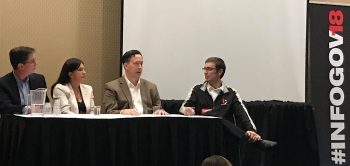 When I wrote about the state of the information professional community last week, I really didn’t think I would be revisiting the topic so soon. While we can self-organize using Meetup, having a national association really makes a difference in the success of every community effort.
When I wrote about the state of the information professional community last week, I really didn’t think I would be revisiting the topic so soon. While we can self-organize using Meetup, having a national association really makes a difference in the success of every community effort.
What made AIIM valuable in this role was their approach to content and information. They weren’t all about records management and the controlling of information. The focus on on using information to address business needs. This included records management but wasn’t constrained by it.
The Certified Information Professional (CIP) was an important feature of AIIM. It provided a valid measure of an information professional. It was a valid measure that needed some nurturing to gain market traction. And then last week, AIIM killed it.
CIP Suffers a True Death
AIIM not caring about the CIP has been apparent for a long time. The marketing of it beyond the association has been sparse. Back in December of 2015, they even cancelled the CIP briefly before the community rose-up to protest.
This is worse.
They have crippled the certification. Jesse Wilkins laid out the issues with what AIIM has done point-by-point. I want to focus on two key aspects, the elimination of Continuing Education Units (CEUs) and opening-up the exam.
CEUs Mean Something
As anyone who has been in this industry for any significant period of time will tell you, the fundamentals have not changed. It is everything else that has changed beginning with the technology. Cloud-based Software-as-a-Service (SaaS) solutions have changed our strategies, as has the advent of Amazon Web Services (AWS) and Azure for application infrastructure. That has had tremendous implications for how we manage information.
While information professionals may not need to learn the ins-and-outs of these technologies, they do need to understand how the technology has changed things. Conference sessions, trainings, webinars, and other events serve an important way to keep up with all the changes. When measured as CEUs, they show that you are working to maintain your expertise.
And I will tell you with absolute certainty, I prefer tracking CEUs to taking the exam again. Any certification exam worth its measure is not an easy or pleasant experience.
Dying a True Death
What they have done to the exam actually killed the CIP. It is now open-book, unproctored, and allows for unlimited retakes. While this means anyone with Google or a smart friend can eventually pass the exam, it also means that the questions are now compromised.
The problem now is that the CIP exam questions are now public domain. Anyone can (and likely already has) go in, capture all of the exam questions, and sell the answers online. Knowing the Internet, they’ll be out there for free shortly thereafter. Regardless of the price, moving it back to a proctored exam now wouldn’t matter. the exam questions are compromised so new ones would need to be created to become a valid certification again.
Last time, AIIM simply took the CIP away. When they reversed course, turning it back on was easy enough. The only harm to the CIP was to its reputation.
They really killed the CIP this time.
What is Next For AIIM?
That is a really good question. The chapter network is dead after years of neglect. The CIP no longer has value. AIIM still has a strong webinar program, reasonable research, and lots of training. However, you don’t need to be a member of AIIM to partake in those.
As for the conference, we are still in a pandemic. Its value is really unknown.
AIIM needs to decide what they want to be going forward. With Peggy Winton ending her tenure, now is the time to define a vision and follow it. Are they an association for information professionals? Are they a vendor association? Are they a marketing firm that collects names, sells it to vendors, and makes money off of training on the side?
That last one is a business plan, not a vision.
Now is the time to answer that question. The next leader of AIIM needs to commit the organization to that vision and move them there. And they need to do it soon while there is still enough value remaining at AIIM to make it worth saving.








